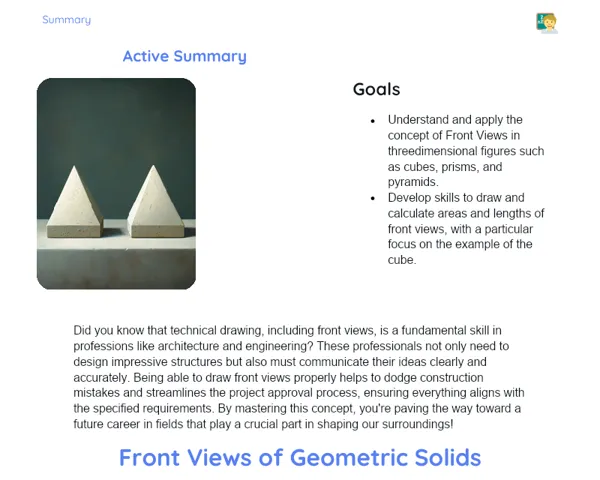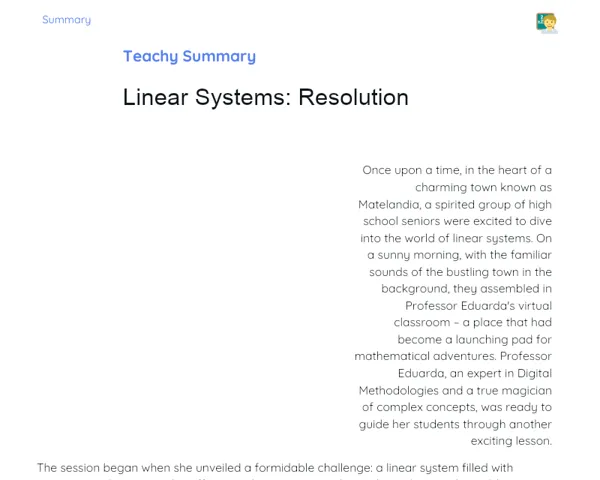Goals
1. Understand the formula for the area of a trapezoid S = h(B + b) / 2.
2. Apply the formula to calculate the area of different trapezoids in practical problems.
3. Develop mathematical problem-solving skills.
4. Encourage critical thinking and analytical abilities when tackling real-world challenges.
Contextualization
Trapezoids are shapes we come across frequently in our everyday lives - think of land plots, house roofs, and even some bridges. Getting a handle on how to work out the area of a trapezoid is essential for many professions like civil engineering, architecture, and surveying, where accurately measuring irregular spaces is key to planning and construction. For example, a civil engineer might need this calculation to figure out how much material is needed to build a road, whereas an architect could use it to design a trapezoidal roof.
Subject Relevance
To Remember!
Definition of Trapezoid
A trapezoid is a four-sided figure with two sides that are parallel, known as the bases. The other two sides are called non-parallel sides. This feature sets it apart from other quadrilaterals like rectangles and squares.
-
A trapezoid has two parallel bases: the longer base (B) and the shorter base (b).
-
The non-parallel sides are termed oblique sides.
-
The height (h) of the trapezoid is the straight-line distance between the bases.
Trapezoid Area Formula
The area of a trapezoid can be worked out using the formula S = h(B + b) / 2, where S represents the area, h is the height, B is the longer base, and b is the shorter base. This formula is based on the total area of two triangles that can be formed from breaking down the trapezoid.
-
To calculate the area, multiply the sum of the bases by the height and then divide by 2.
-
This formula is vital for solving practical problems involving trapezoidal shapes.
-
Understanding the formula is beneficial for professions that require accurate area measurements.
Practical Application of the Formula
The trapezoid area formula is commonly used in real-world scenarios like civil construction, surveying, and architecture. For instance, it can help figure out how much material is needed to cover a trapezoidal space or gauge the area of uneven land plots.
-
Civil engineers apply the formula when calculating areas for projects such as bridges and roads.
-
Surveyors use it to measure irregular land areas, ensuring precise lot divisions.
-
Architects use the formula when designing trapezoidal roofs and other structures.
Practical Applications
-
Civil engineers can determine the amount of asphalt needed for a trapezoidal road.
-
Surveyors can accurately gauge the area of a trapezoidal plot for clear property division.
-
Architects will always calculate the number of tiles needed for a trapezoidal roof.
Key Terms
-
Trapezoid: A four-sided shape with two parallel bases.
-
Longer base (B): The larger of the two parallel edges of the trapezoid.
-
Shorter base (b): The smaller of the two parallel edges of the trapezoid.
-
Height (h): The straight-line distance between the bases of the trapezoid.
-
Area (S): The size of the trapezoid's surface, calculated by S = h(B + b) / 2.
Questions for Reflections
-
How does being accurate in calculating the area of a trapezoid impact the quantity of materials used in construction?
-
In what ways can understanding trapezoid geometry apply to other fields of study?
-
How can the skill to solve practical math problems, like finding the area of a trapezoid, enhance your daily life and future career?
Drawing and Calculating Trapezoids
In this mini-challenge, you’ll sketch different trapezoids, measure their dimensions, and calculate their areas to reinforce your understanding of the learned formula.
Instructions
-
Draw three different trapezoids on a piece of paper, each with varied measurements for the bases (B and b) and the height (h).
-
Use a ruler to measure the bases and height of each trapezoid accurately.
-
Apply the area formula (S = h(B + b) / 2) to work out the area of each trapezoid.
-
Take note of the measurements and calculations alongside each sketch.
-
Compare the results and reflect on how accurate your calculations are.



